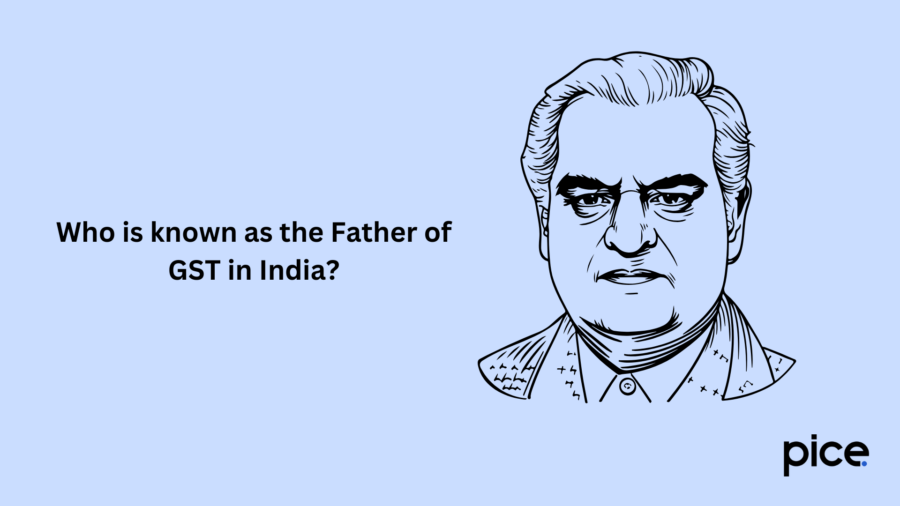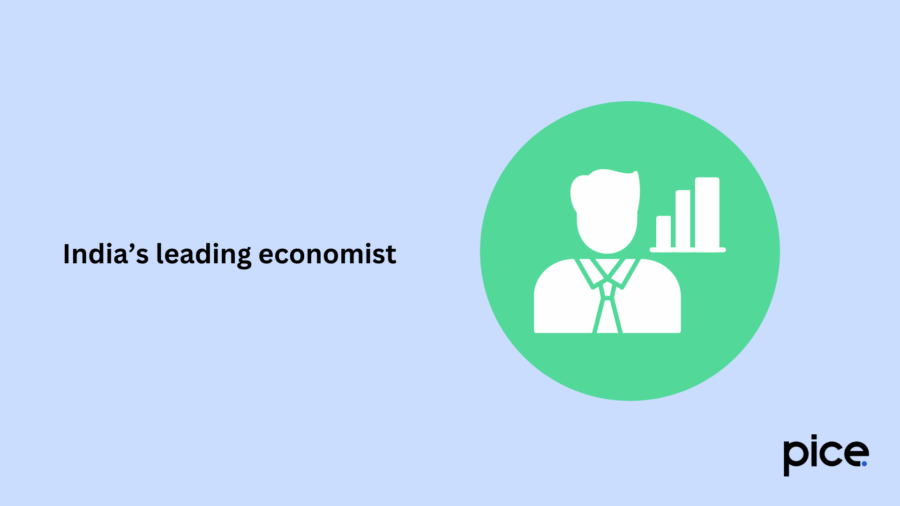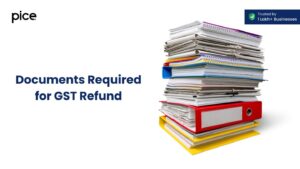Father of GST in India: An Overview
- 20 Jan 25
- 9 mins

Father of GST in India: An Overview
Key Takeaways
- GST unified India’s indirect tax system, replacing multiple taxes with a single framework.
- Implementation of GST led to an 11% increase in India’s tax revenues.
- Atal Bihari Vajpayee is hailed as the ‘Father of GST in India’.
- GST was implemented on 1st July 2017, marking India’s largest tax reform.
- The GST Council ensures continuous updates to improve its effectiveness.
GST, or the Goods and Services Tax, is essentially an indirect tax levied on the supply of goods and services. This tax introduced to boost the economic growth of India involves multiple stages and is destination-oriented.
It is imposed upon any sort of value addition and conveniently replaces various local-level indirect taxes, including VAT, service tax, excise duty, Sales Tax, cess and surcharge, additional duties of customs, additional excise duties, etc.
It is interesting to note that only upon GST implementation in India has there been a record growth of 11% in the tax revenues of the country. This came to be, thanks to the identification of loopholes and their subsequent rectification in the GST system. Punitive action was taken by the government on tax evaders.
Thus, it is safe to say that the GST system has been one of the country’s greatest financial wins, in turn turning the system into a unified framework of tax collection. It has been a boon to the Indian economy.
Implemented on 1st July 2017, the GST system in India is associated with a fascinating history of its own, the tale beginning with the father of GST in India at the top. In this blog, you’re going to read about his role in prompting the efficient GST regime we know of, today.
Who is known as the Father of GST in India?

Atal Bihari Vajpayee, the former Prime Minister of India, was the one who originally presented the idea of implementing an elaborate yet far more comprehendible tax system within the country in the year 2000. Thus, he is bestowed with the title of 'Father of GST in India'. However, the same title has also often been associated with Dr. Vijay Kelkar, who primarily laid the framework and foundation for GST in our country.
While the implementation of the GST system was made possible with the support of various policymakers, Prime Minister Vajpayee is mainly credited with initiating the revolutionary era defined by financial clarity. In 2000, Atal Bihari Vajpayee responsibly set up a committee, led by former West Bengal's Finance Minister, Asim Dasgupta, to come up with a plausible framework for the Goods and Services Tax (GST) system in India.
A Recap on the History of GST in India
In 2004, the Kelkar Task Force recommended a comprehensive GST tool, and the idea was delivered by P. Chidambaram, the ex-Finance Minister, in various budget speeches later. The Empowered Committee of State Finance Ministers released the first dialogue paper on GST in the year 2009, and a Constitution Amendment Bill was introduced in the Lok Sabha (2011) to make the GST concept easier to grasp.
The Constitution Bill, 2014, 122nd Amendment, was delivered in Parliament again, and the bill was passed by both Houses of Parliament in 2016. Upon receiving the assent of the President, the bill was enacted. Finally, the GST regime was implemented on 1st July 2017. After years of deliberation and discussion, the ideas came to fruition on the implementation of GST.
Over the past decade or so, post-implementation of the GST, under the GST Council established by Pranab Mukherjee, the system has not stayed stagnant but evolved thoroughly. The GST Council wields the power to make alterations to the GST law. It has undergone a number of necessary amendments that address concerns or issues as and when raised by respective stakeholders. Note that the GST Council is headed by the Finance Minister.
Presenting the Architects of India’s GST System
Here are the architects in question, who have played a major role in the development of GST in India:
Atal Bihari Vajpayee
Former Indian Prime Minister, Atal Bihari Vajpayee, is revered and credited with founding the GST system in India and is typically referred to as the ‘Father of GST in India’. The renowned poet was awarded India's highest civilian honour, the Bharat Ratna, by President Pranab Mukherjee. He was also the senior leader of the Bharatiya Janta Party (BJP) but later quit active politics due to health concerns.
He was respected for several things, one of them being the promotion of diplomatic relations with Pakistan by taking the bus to travel to Lahore with Prime Minister Nawaz Sharif. Especially, after the war of 1999 with Pakistan, he took it upon himself to pacify relations through engagement with President Pervez Musharraf.
Vajpayee also became a member of the Hindu Nationalist Volunteer Organisation. In 1977, Vajpayee became the Minister of External Affairs in Prime Minister Morarji Desai's cabinet.
During his reign, the initial steps towards the direction of implementing the GST regime were undertaken, with the groundwork being laid and the procedure having been overseen by him. His position as the ‘father’ made more sense with the destiny that followed in context; India’s biggest taxation reform in history being marked in the process!
Indian politician and Prime Minister Atal Bihari Vajpayee held a meeting with his economic advisory panel that included three former members and RBI governors, including Bimal Jalan, IG Patel, and C Rangarajan. They came up with the idea of a single common goods and services tax in India that would replace several other indirect taxes. The framework then awaited government approval.
Dr. Vijay Kelkar

Dr. Vijay Kelkar was considered to be India’s leading economist, equipped with knowledgeable insight on the concept of GST. Occupying the role of Chairman of the Finance Commission and Kelkar Corporation, he played a significant role in improving the GST regime base plan.
Specifically, in 2004, Vijay Kelkar chaired the Kelkar Task Force on indirect tax reforms and subsequently recommended the implementation of a national-level GST. The objective of this task force was to substitute the prevailing fragmented and complex tax structure with a more comprehensive, unified market. This would result in the simplification of compliance, promote widespread economic integration, and even reduce tax cascading.
Arun Jaitley
When Arun Jaitley was the finance minister, the GST was enforced after being passed through the Houses of Parliament and implemented effectively. His contribution towards prompting cooperation between various economic and political elements of GST is worthy of praise.
The States and Central Government reached a point of broad consensus on important sections of the GST under the guidance of Finance Minister Arun Jaitley and under the new government led by Narendra Modi.
P Chidambaram
Finally, P Chidambaram, the former finance minister of India, deserves a mention in this list owing to his share of contributions in bringing forth a unified tax system. In the year 2006, he proposed the date ‘April 2010’ as the deadline for enforcing GST. It’s important to note that he had even released a white paper on state-level, value-added tax.
Conclusion
With the GST regime being so efficient and its implementation serving as a major moment in the history of our country’s tax reform records, information regarding the father of GST in India is of particular value. The history of GST in India is truly enriching considering how the new system has developed through the years, polishing up its effectiveness. A provision in the law compensates the States in the case of loss of revenue arising out of its active implementation.
Several individuals played significant roles in the shaping of the Indian GST model, mainly including Prime Minister Vajpayee and Vijay Kelkar. Here’s a little snippet of the huge growth that the implementation of the GST regime has been able to achieve: the Centre has collected a tax amount recorded at an average of ₹1.55 lakh crore monthly. It has proved to be a huge stride away from a fragmented economy.
The introduction of GST in India, indeed, has been a pivotal event in the progress of our nation, with guarantees of growth in collection, effectiveness, expansion, clarity, and reduction of revenue shortfall. All owing to the architects who have been hard at work!
💡If you want to streamline your payment and make GST payments, consider using the PICE App. Explore the PICE App today and take your business to new heights.
 By
By 

















